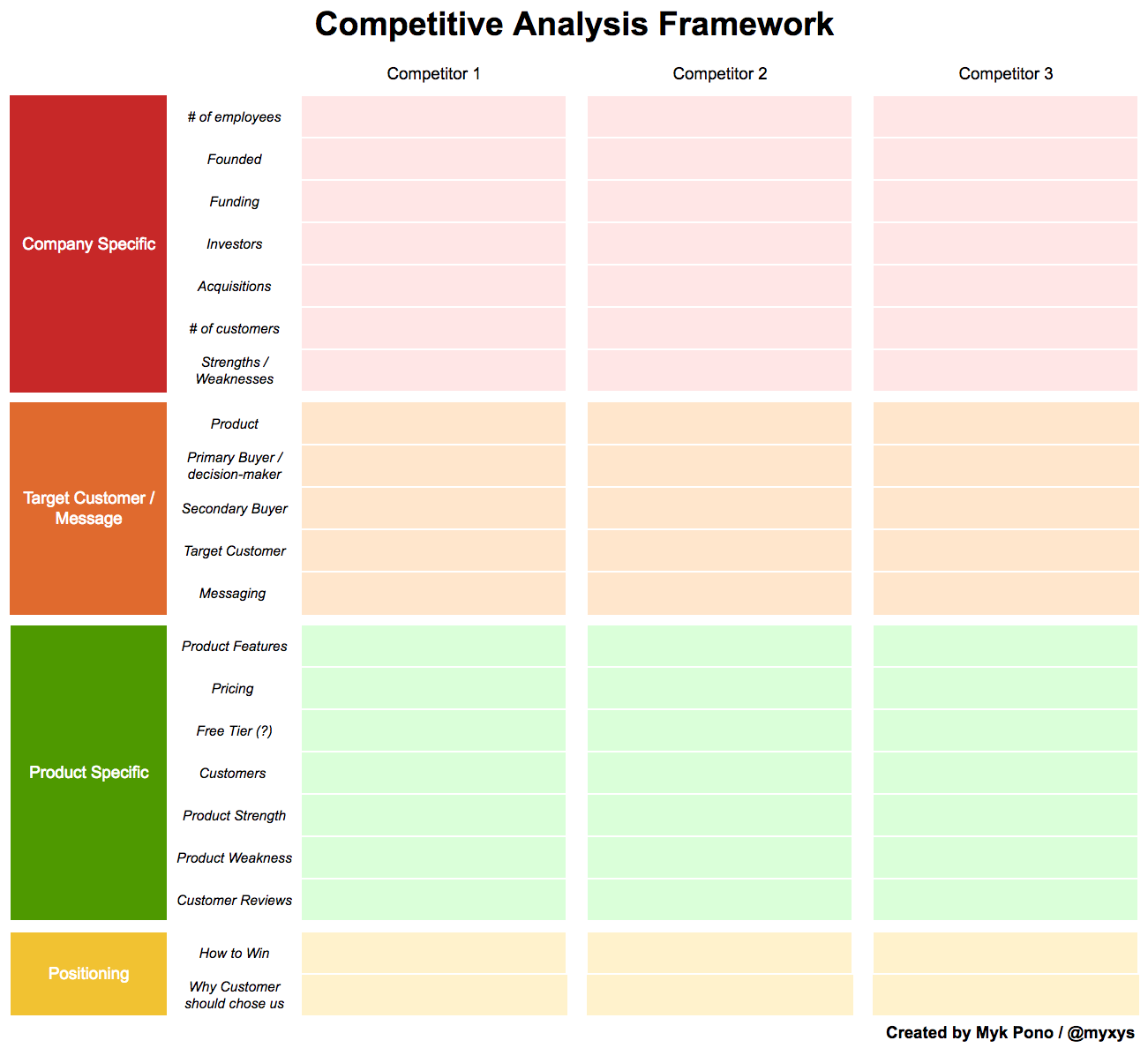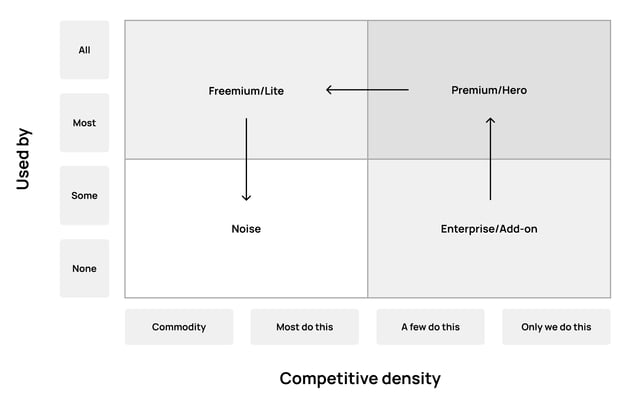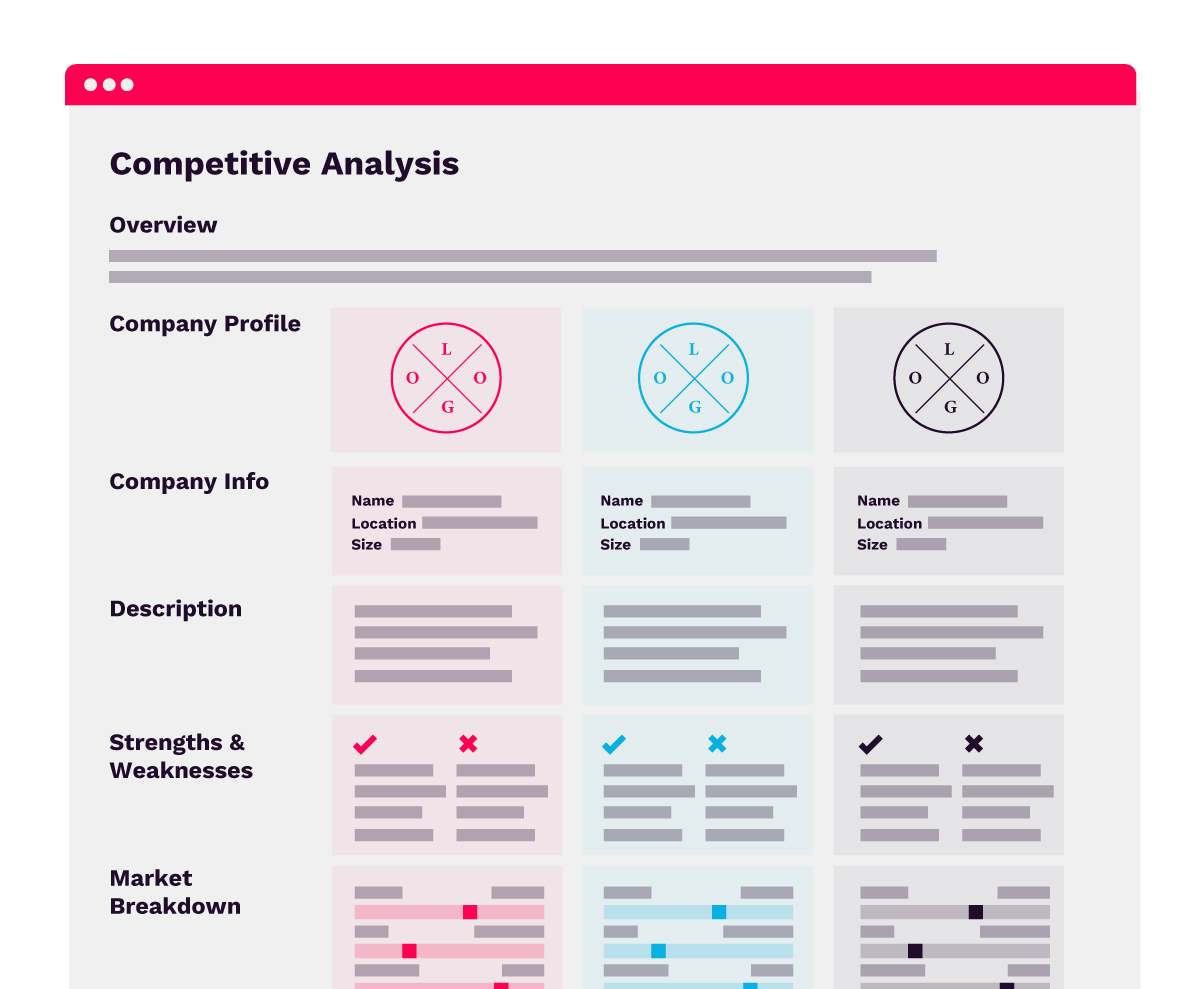SaaS competitive analysis involves evaluating your competitors to understand their strengths, weaknesses, and market positioning. This helps in identifying opportunities and threats within the industry.
Competitive analysis in the SaaS industry is crucial for businesses aiming to stay ahead. It involves a systematic evaluation of competitors to understand their strategies and performance. This analysis provides valuable insights into market trends, customer preferences, and potential areas for improvement.
By assessing competitors’ strengths and weaknesses, companies can identify gaps in the market and tailor their offerings accordingly. Effective competitive analysis helps in crafting strategies that differentiate your SaaS product, enhance customer satisfaction, and boost market share. It is an ongoing process that requires continuous monitoring and adaptation to stay relevant in a dynamic market environment.
Introduction To Saas Market
The SaaS market is booming with innovation and growth. Businesses of all sizes are adopting Software-as-a-Service solutions. These solutions help streamline operations and reduce costs.
Understanding the SaaS market is crucial for staying competitive. A comprehensive analysis can provide insights into industry trends and key players.
Industry Overview
The SaaS industry is growing at an impressive rate. According to Gartner, the market is projected to reach $143.7 billion by 2022.
SaaS solutions offer scalability and flexibility. They are used in various sectors like healthcare, finance, and education.
Key trends in the SaaS market include:
- Increased adoption of cloud computing
- Growing demand for AI and machine learning integrations
- Expansion of mobile SaaS applications
Key Players
Several companies dominate the SaaS market. These key players set trends and drive innovation.
Here are some of the most influential SaaS companies:
| Company | Primary Service | Market Share |
|---|---|---|
| Salesforce | Customer Relationship Management (CRM) | 19.8% |
| Microsoft | Productivity and Collaboration | 13.2% |
| Adobe | Digital Media and Marketing | 10.1% |
| Cloud Computing | 8.7% | |
| Oracle | Enterprise Resource Planning (ERP) | 6.5% |
These companies offer diverse services to meet various business needs. They continue to innovate and lead the market.
Importance Of Competitive Analysis
Conducting a competitive analysis is crucial for any SaaS business. It helps you understand your market position. You can identify your strengths and weaknesses. This analysis provides insights into your competitors’ strategies. You can make informed decisions to stay ahead.
Strategic Advantages
A thorough competitive analysis offers several strategic advantages. You can uncover your competitors’ best practices. These practices can inspire improvements in your own strategies.
- Understand market trends
- Identify gaps in your offerings
- Benchmark your performance
By understanding market trends, you can align your strategies accordingly. Identifying gaps helps you innovate and fill those gaps. Benchmarking your performance helps you set realistic goals.
Identifying Opportunities
Identifying opportunities is another key benefit. You can discover unmet customer needs. This can lead to the development of new features or services.
- Analyze customer feedback
- Monitor industry developments
- Study competitors’ product updates
Customer feedback reveals what users want. Monitoring industry developments keeps you updated on new trends. Studying competitors’ updates shows you areas for improvement.
| Aspect | Benefit |
|---|---|
| Market Trends | Stay relevant and competitive |
| Customer Needs | Create valuable features |
| Competitor Strategies | Learn and adapt |
By leveraging these insights, you can craft a better SaaS strategy. This will help you stay ahead in a competitive market.
Market Leaders In Saas
The world of Software as a Service (SaaS) is highly competitive. Market leaders set the benchmark with their innovative solutions. These companies dominate because of their exceptional performance and customer satisfaction. Let’s explore the top performers and their success stories.
Top Performers
The top performers in the SaaS market have unique strengths. They offer scalable solutions, excellent customer support, and constant innovation. Here are a few of the market leaders:
- Salesforce: Known for its CRM solutions.
- Microsoft: Office 365 and Azure lead the way.
- Adobe: Creative Cloud is a favorite for designers.
Success Stories
These companies have inspiring success stories. They began with simple ideas and grew into giants. Let’s take a look at some of them:
| Company | Success Factor | Key Achievement |
|---|---|---|
| Salesforce | Customer Relationship Management (CRM) | Became a CRM industry leader |
| Microsoft | Cloud Computing | Dominates with Azure |
| Adobe | Creative Software | Revolutionized digital media creation |
These success stories highlight the importance of innovation. They show how focused strategies lead to market dominance.
Analyzing Competitors
Understanding your competitors is vital for any SaaS business. Analyzing competitors helps you identify gaps and opportunities in the market. It also allows you to learn from their successes and mistakes. This section will dive into key areas of competitor analysis.
Strengths And Weaknesses
Assessing the strengths and weaknesses of competitors is essential. Use a simple table to list them:
| Competitor | Strengths | Weaknesses |
|---|---|---|
| Competitor A | Strong customer support, User-friendly interface | High pricing, Limited integrations |
| Competitor B | Affordable, Extensive features | Poor documentation, Slow updates |
Identify what makes your competitors excel. Also, note where they fall short. This will help you enhance your own product.
Market Positioning
Market positioning defines how a competitor is viewed in the market. It involves understanding their target audience and unique selling proposition (USP). Create a bulleted list for better clarity:
- Target Audience: Who are they targeting? Businesses, individuals, or both?
- Unique Selling Proposition (USP): What makes them stand out?
- Pricing Strategy: Are they budget-friendly or premium?
- Marketing Channels: Which platforms do they use to reach customers?
Analyzing these factors can help you find your own niche. You can position your SaaS product more effectively this way.
Identifying Market Gaps
In the rapidly evolving SaaS landscape, identifying market gaps can provide a competitive edge. Understanding these gaps helps you develop products that meet specific needs. This section explores how to identify unmet needs and niche opportunities in the market.
Unmet Needs
To find unmet needs, start with customer feedback. Look for common complaints or requests. Conduct surveys and interviews to gather insights. Analyze customer reviews on competitor platforms.
Here are some key methods to identify unmet needs:
- Customer Surveys: Ask specific questions about their challenges.
- User Interviews: Have one-on-one conversations for deeper insights.
- Review Analysis: Read reviews on competitor sites to find gaps.
Use this data to create a list of features or services lacking in the market. Prioritize these based on frequency and impact.
Niche Opportunities
Identifying niche opportunities involves targeting smaller, underserved segments. These niches often have less competition and more loyal customers. Start by researching smaller market segments within your industry.
Consider the following steps to uncover niche opportunities:
- Market Research: Use tools like Google Trends to spot emerging niches.
- Competitor Analysis: Identify areas where competitors are not active.
- Social Media: Monitor discussions in niche communities and forums.
Focus on solving specific problems for these segments. Tailor your marketing and product development to meet their unique needs.
To summarize, identifying market gaps through unmet needs and niche opportunities can position your SaaS business for success. By listening to customers and targeting underserved segments, you can develop products that truly resonate with your audience.

Credit: www.madx.digital
Tools For Competitive Analysis
To stay ahead in the SaaS industry, understanding your competition is crucial. Using the right tools for competitive analysis can give you a significant edge. These tools help you gather valuable insights and make informed decisions.
Analytical Tools
Analytical tools are essential for breaking down your competition’s strategies. They help you understand what works and what doesn’t.
- SEMrush: An all-in-one tool for SEO, PPC, and content research.
- Ahrefs: Great for backlink analysis and keyword research.
- BuzzSumo: Ideal for content discovery and social listening.
- Moz: Provides comprehensive SEO analytics and insights.
- SpyFu: Excellent for competitor PPC and SEO strategies.
Each of these tools offers unique features that can help you dissect your competitors’ online presence.
Data Sources
Data sources are the backbone of effective competitive analysis. They provide the raw data you need for deep insights.
| Data Source | Purpose |
|---|---|
| Google Analytics | Website traffic and user behavior analysis |
| Social Media Platforms | Engagement metrics and audience demographics |
| Industry Reports | Market trends and competitive landscape |
| Customer Reviews | Product feedback and satisfaction levels |
| Forums and Communities | User discussions and pain points |
Using diverse data sources ensures a well-rounded understanding of your competition.
Case Studies
Analyzing case studies helps SaaS companies understand successful strategies and avoid common pitfalls. Real-world examples provide valuable insights into competitive dynamics. Let’s explore some fascinating case studies.
Successful Strategies
Some SaaS companies have thrived by implementing innovative strategies. Here are a few examples:
| Company | Strategy | Outcome |
|---|---|---|
| Slack | Freemium Model | Rapid User Growth |
| Dropbox | Referral Program | Massive User Acquisition |
| Zoom | Ease of Use | Market Leadership |
Slack used a freemium model, allowing users to try the product for free. This strategy led to rapid user growth. Dropbox implemented a referral program, encouraging users to invite friends. This approach resulted in massive user acquisition. Zoom focused on ease of use, making video conferencing accessible for all. This led to market leadership.
Lessons Learned
From these case studies, SaaS companies can learn valuable lessons:
- Freemium Model: Offering a free tier attracts more users.
- Referral Programs: Users can be powerful promoters.
- User Experience: A simple interface can drive adoption.
Freemium models help attract more users. Referral programs turn users into promoters. A simple user interface enhances adoption rates.
By studying these case studies, SaaS companies can refine their strategies. Implementing these lessons can lead to significant growth and success.

Credit: www.mykpono.com
Future Trends In Saas
The SaaS industry is evolving rapidly. Keeping up with the latest trends is crucial. New technologies and market shifts are reshaping the landscape. This section explores future trends in SaaS. Stay ahead by understanding these key developments.
Emerging Technologies
New technologies are transforming SaaS. Here are some key advancements:
- Artificial Intelligence (AI): AI is automating tasks and improving analytics.
- Machine Learning (ML): ML enhances user experiences by personalizing services.
- Blockchain: Blockchain ensures data security and transparency in SaaS.
- Internet of Things (IoT): IoT integrates with SaaS to provide real-time data and insights.
- Edge Computing: Edge computing reduces latency by processing data closer to the source.
Market Predictions
The SaaS market is expected to grow significantly. Here are some predictions:
| Year | Market Size (in billions) |
|---|---|
| 2023 | $145 |
| 2024 | $165 |
| 2025 | $190 |
Several factors are driving this growth:
- Remote Work: The rise in remote work is increasing the demand for SaaS tools.
- Subscription Models: More businesses are adopting subscription-based services.
- Global Expansion: SaaS companies are expanding their reach globally.
Staying updated on these trends can give your business a competitive edge.

Credit: www.t2d3.pro
Frequently Asked Questions
What Is Saas Competitive Analysis?
SaaS competitive analysis involves evaluating competitors’ strengths and weaknesses. It helps identify opportunities and threats. This process is crucial for strategic planning and market positioning.
Why Is Competitive Analysis Important For Saas?
Competitive analysis is essential for SaaS to understand market trends. It aids in identifying gaps and opportunities. This insight helps in making informed decisions for growth.
How Do You Conduct A Saas Competitive Analysis?
Conduct a SaaS competitive analysis by researching competitors’ products, pricing, and marketing strategies. Use tools like SWOT analysis and customer feedback. Regularly update your findings.
What Tools Can Assist In Saas Competitive Analysis?
Tools like SEMrush, Ahrefs, and SimilarWeb assist in SaaS competitive analysis. They provide insights into competitors’ traffic, keywords, and backlinks. These tools help in making data-driven decisions.
Conclusion
Conducting a thorough SaaS competitive analysis is crucial for staying ahead. It helps identify strengths and weaknesses. Use the insights to refine your strategies. This will enhance your market position and drive growth. Stay vigilant and continuously monitor your competitors.
Success in the SaaS market depends on informed decisions and strategic actions.
